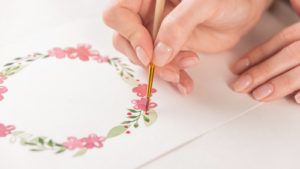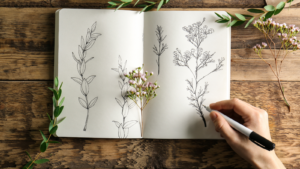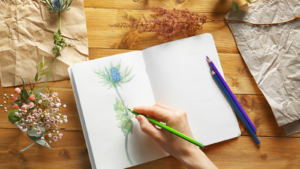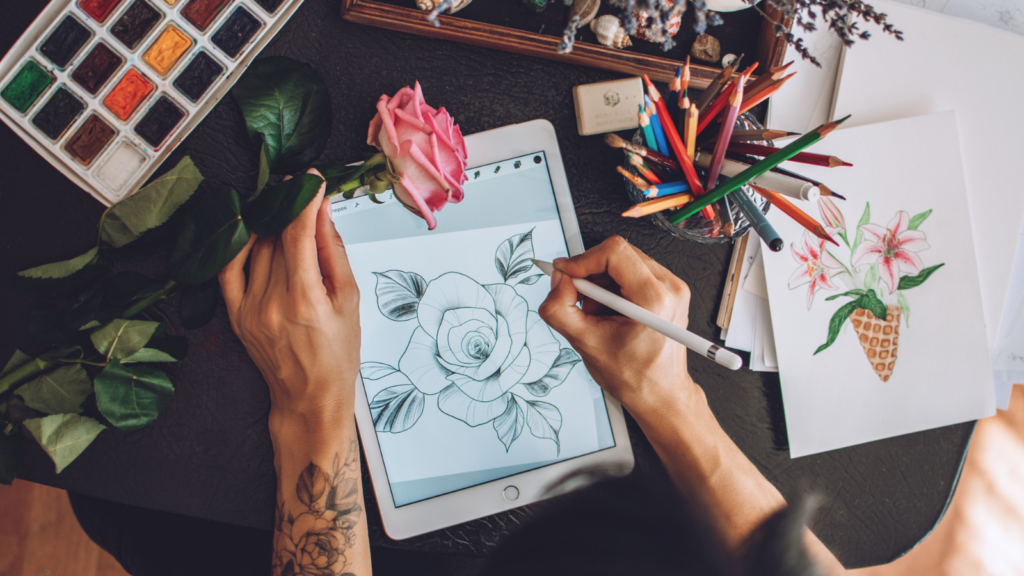Drawing flowers, or “dibujo flor,” is a timeless art form that captivates both artists and admirers alike. With their intricate details and vibrant colors, flowers offer endless inspiration and challenge for those looking to hone their artistic skills. Whether it’s the delicate petals of a rose or the bold structure of a sunflower, each bloom presents a unique opportunity to explore creativity and technique, much like the innovative experiences found in Microsoft’s gaming, where imagination thrives.
For artists, mastering flower drawing involves more than just capturing the likeness of a bloom. It requires an understanding of shapes, shading, and the subtle interplay of light and shadow. As they sketch each petal and leaf, artists engage in a meditative process that enhances their observational skills and artistic expression, much like the dedication required to build a successful gaming career.
Dibujo:crzmcynr7dm= Flor
 Dibujo flor delves into floral intricacy through various techniques and styles. Realism captures petals with precise shading and gradients, while abstraction emphasizes shapes and colors for unique interpretations. Artists choose watercolors, pencils, or digital media to bring flowers to life. They embrace nature’s impermanence, immortalizing fleeting blooms through skill and creativity. Workshops offer structured guidance for honing techniques, while personal projects encourage exploration. Dibujo flor provides therapeutic benefits by fostering focus and mindfulness. Using botanical knowledge enhances accuracy and depth.
Dibujo flor delves into floral intricacy through various techniques and styles. Realism captures petals with precise shading and gradients, while abstraction emphasizes shapes and colors for unique interpretations. Artists choose watercolors, pencils, or digital media to bring flowers to life. They embrace nature’s impermanence, immortalizing fleeting blooms through skill and creativity. Workshops offer structured guidance for honing techniques, while personal projects encourage exploration. Dibujo flor provides therapeutic benefits by fostering focus and mindfulness. Using botanical knowledge enhances accuracy and depth.
Historical Context of Floral Drawing
Floral drawing has roots tracing back to ancient civilizations, where it adorned manuscripts and decorative arts. In Ancient Egypt, artisans depicted flowers in tomb paintings, symbolizing rebirth and the afterlife. During the Middle Ages, botanical illustrations flourished with the rise of herbals, documenting plant species for medicinal purposes. The Renaissance witnessed a surge in realistic floral art, fueled by explorers’ discoveries of new plant species.
Techniques and Materials
“Dibujo flor,” or flower drawing, relies on a range of techniques and materials that enhance artistic expression and creativity.
Traditional Techniques
Traditional techniques in “dibujo flor” include pencil sketching and watercolor painting, both offering timeless ways to represent floral forms. Pencil sketching emphasizes contour lines and shading, capturing intricate petal details. Artists use hatching and cross-hatching to convey depth and texture.
Popular Styles in Floral Drawing
 Floral drawing, or “dibujo flor,” spans various styles that captivate artists and viewers.
Floral drawing, or “dibujo flor,” spans various styles that captivate artists and viewers.
Realistic floral illustrations depict flowers with precision and intricate detail. Artists meticulously render petals, leaves, and stems, using techniques like shading and cross-hatching to capture their natural forms. Watercolors and pencils are popular for achieving lifelike representations.
Abstract floral designs focus on interpreting flowers through shapes, colors, and forms. Rather than capturing the exact likeness, artists emphasize expressive elements, allowing personal and creative interpretations. This style often employs bold color palettes, flowing lines, and exaggerated proportions.
Influential Artists in Floral Drawing
Pierre-Joseph Redouté, renowned for detailed botanical illustrations, elevated the art of floral drawing in the 18th and 19th centuries. His work displays precision and lifelike accuracy, influencing scientific illustration standards. Georgia O’Keeffe took a bold, modern approach, expanding the forms and colors of flowers on canvas. Her focus on magnified floral depictions shifted perspectives and inspired abstraction. More recently, Yellena James fuses intricate patterns and vivid colors in contemporary floral art, blending nature and imagination.
Tips for Creating Your Own Dibujo Flor
 Start with careful observation of real flowers, noting shapes, colors, and petal arrangements. Break down complex structures into simple geometric forms to simplify initial sketches. Experiment with different mediums, like colored pencils, watercolors, or digital tools, to find your preferred style. Practice shading techniques to enhance depth and form. Use light layers for watercolors to build color gradually, preventing oversaturation. Study historical floral art to gain inspiration and context. Incorporate personal elements and interpretations to convey uniqueness in your work. Regular practice refines skills and fosters creative growth.
Start with careful observation of real flowers, noting shapes, colors, and petal arrangements. Break down complex structures into simple geometric forms to simplify initial sketches. Experiment with different mediums, like colored pencils, watercolors, or digital tools, to find your preferred style. Practice shading techniques to enhance depth and form. Use light layers for watercolors to build color gradually, preventing oversaturation. Study historical floral art to gain inspiration and context. Incorporate personal elements and interpretations to convey uniqueness in your work. Regular practice refines skills and fosters creative growth.
Mastering The Techniques Of Flower Drawing
“Dibujo flor” remains a captivating art form that bridges the gap between nature and human creativity. By mastering the techniques of flower drawing, artists not only enhance their skills but also connect with a rich historical tradition. Whether through realistic depictions or abstract interpretations, each piece of floral art tells a unique story, reflecting the artist’s vision and the timeless beauty of nature. As the practice continues to evolve, it invites both seasoned artists and newcomers to explore and express their creativity, ensuring that the allure of “dibujo flor” endures for generations to come.

